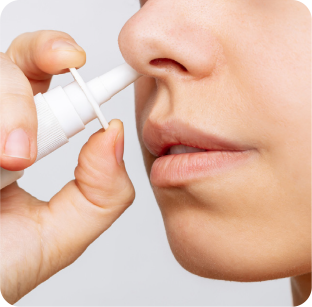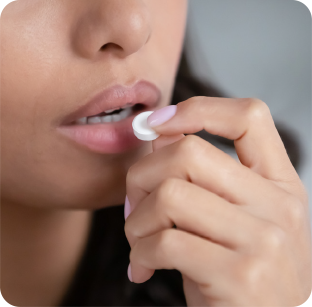CUSTOMER SCENARIO

21-year-old Sunita is struggling with symptoms associated with acute sinusitis, such as congestion, facial pain and a fever. Through the Pharmacy First service, she has been provided with a corticosteroid nasal spray; however, she would like some advice about what else she could do to help improve her symptoms and reduce the spread of infection.
Note: Whether or not your customer is eligible for treatment via Pharmacy First, you should ALWAYS offer self-care and safety netting advice.
Click through the slider below to learn about different self-management strategies she could try5,9
Sunita comes back after a few days and seems much worse. The pharmacist assesses her and then refers her for URGENT medical attention.
Think about what red flag symptoms would indicate urgent referral
-
Signs of sepsis, such as:
Acting confused, slurred speech, or not making sense
Blue, grey, pale or blotchy skin, lips or tongue – on brown or black skin, this may be easier to see on the palms of the hands or soles of the feet
A rash that does not fade when you roll a glass over it
Difficulty breathing, breathlessness or breathing very fast
Passing little or no urine
A severe headache
Chest pain
Difficulty swallowing or drooling






